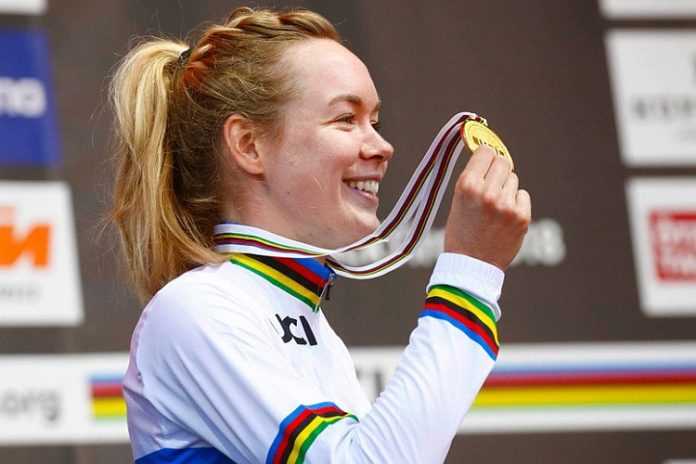(★ Friends: Your 68 generous donations paid our semi-annual server and support costs, and starts to help with December’s bill. If you would like to join in, please donate here. Your interest and enthusiasm are the reasons this site continues. ★)
Stanford’s decision to discontinue 11 varsity sports last July and the University of Minnesota’s 10 September announcement that men’s gymnastics, tennis and indoor and outdoor track & field will be cut sent shock waves through the collegiate sports community.
Minnesota’s decision brought this tweet from University of Virginia coach (and USA Track & Field President) Vin Lananna:
“Tone deaf is the elimination of the track and field program at the flagship university in the city that has been at the center of social injustice. TF is one of the sports that provides access to students of color”
and followed by
“College track and field provides access to education for 1000’s of students of color every year. As these programs are eliminated what happens to these student athletes and their coaches? Speak up!”
Former 100 m world-record holder Leroy Burrell, head coach at Houston and President of the U.S. Track & Field and Cross-Country Coaches Association (USTFCCCA) circulated a letter on 15 September that included:
“Thursday’s announcement … is a shot-across-the-bow that threatens every Division I men’s track & field/cross country program in the country. It is clear to me that our sport is being made a scapegoat due to years of athletic administration mismanagement and poor decisions that have led to departments that are highly leveraged. Looking for excuses in the name of temporary financial shortfalls as a result of COVID-19 and ‘Title IX compliance’ is unacceptable. The ‘difficult choices’ cited by Minnesota and others to drop men’s track & field and/or cross country does little to nothing to rectify their temporary financial situations, while permanently eliminating student-athlete opportunities. …
“Going forward, I am directing our national office to seek out a public relations firm interested in providing pro bono professional assistance to create and execute a national campaign to educate university administrators and the general public on the values and benefits of a track & field/cross country program. In addition, I am requesting the national office to identify a law firm and/or lobbyist to assist in guiding our campaign’s direction. Further, I plan to challenge our association’s board of directors, executive committees, and all member coaches to engage in our messaging as we move forward.”
Since the coronavirus pandemic hit full-force in March, some 66 Olympic-sport programs have been cut by NCAA Division I schools, including:
● 18 in Tennis: 11 for men, seven for women
● 10 in Swimming & Diving: five for men and five for women
● 9 in Track & Field (all men): two in outdoor T&F, five in indoor T&F, two in Cross-Country
● 5 in Gymnastics: three for men, two for women
● 5 in Golf: three for men, two for women
That’s the bad news, and it gets worse when one considers the losses being sustained with limited football seasons and games with few or no fans. The financial pressure on all intercollegiate sports at almost all universities is going to increase.
The NCAA is moving steadily toward a liberalized policy on athlete name, image and likeness use, with the Division I rules expected to be voted on in November and in place for the 2021-22 school year. The NCAA has asked the U.S. Congress for legislation in order to create a national set of rules, rather than a state-by-state patchwork, but whether this is even possible in the midst of the coronavirus pandemic and the 2020 election season, is unknown.
The great danger of the so-called “NIL” rules is that corporate support of university athletic programs may be impacted (or vanish) due to companies deciding to make agreements with individual stars – perhaps starting in high school – and not the university. California, Colorado and Florida have passed NIL laws and the Florida statute will be the first to take effect, on 1 July 2021. Florida Statutes sec. 1006.74 does offer some protection to the schools, with a provision that no NIL agreement is allowed “if a term of the contract conflicts with a term of the intercollegiate athlete’s team contract.”
The potential good news is that (1) college football is being played, more or less; (2) it appears there will be a college basketball season and an NCAA Tournament, and (3) there are cost-control and funding options available going forward. These require change, which will not go down well in some quarters:
● For collegiate programs outside of the main revenue producers of football and basketball, schedules have to be re-thought. Many schools are moving toward regional competitions to cut travel costs. Regional conferences for some sports can be introduced. This hardly a new idea; the Mountain Pacific Sports Federation is made up of Pac-12, Big West, Mountain West, West Coast Conference and other schools for the sports of gymnastics, indoor track, lacrosse, swimming & diving, volleyball and water polo. Travel would be restricted to championship events.
● More schools are looking at endowments for specific sports, in order to assure their continuation. This concept should not be underrated, especially for larger schools.
● U.S. National Governing Bodies have a role to play in this, too. USA Gymnastics, alarmed at the 10 men’s and women’s gymnastics programs which have been vaporized, is coordinating with the Collegiate Gymnastics Association, with added interest from the U.S. Olympic & Paralympic Committee, in the search for long-term stability in men’s gymnastics.
● Just asking: how many schools are working together to create revenue-generating ideas for sports other than football and basketball? Do any of them try? What about a week-long NCAA Championships Festival each spring, including women’s beach volleyball, men’s and women’s tennis, men’s and women’s track & field, men’s volleyball and women’s water polo? How about a winter festival including men’s and women’s fencing, gymnastics, ice hockey, swimming & diving, indoor track & field and men’s wrestling … in Las Vegas! Hello?
● Finally, let’s look at football. Despite widespread commentary that the sport cannot be changed, lest its revenue impact be reduced, history shows this not to be true.
In fact, it is entirely likely that substantially more money may be poured into the sport fairly soon. While the Atlantic Coast Conference has television agreements set through 2035-36, there are four major conference agreements up soon: 2022-23 for the Big 10; 2023-24 for the Pac-12; 2023-24 for the Southeastern Conference Tier 1 rights (currently held by CBS; other rights secured through 2033-34) and 2024-25 for the Big XII. These could land each conference another huge payday, whether from CBS, ESPN, Fox Sports, TBS or another media player, or some combination.
Next, football itself needs to be looked at. It has not been always been as it is now, and it may be time for change again. Through 1972, there were no limits on the number of athletic scholarships which could be provided by any school. For 1973, a limit of 105 scholarships was adopted, in part due to the passage of Title IX of the Education Amendments Act of 1972. Scholarship reductions were made in 1978 (to 95) and to the current 85 in 1992. That was 28 years ago.
If we look at the NFL, its new roster rules will allow 55 players on a team for during-the-week practices and a 14-member practice squad (as of 2022): that’s 69 total players. Isn’t that enough? It’s worth noting that NCAA Football Championship Subdivision teams have an 85-player limit, but only 63 scholarships available.
Further, the current NCAA rules require that all Football Bowl Subdivision team players be on full scholarships: 85 scholarships, 85 players. This also applies to men’s and women’s basketball, and women’s gymnastics, volleyball and tennis. This needs to be changed. While the total team size should remain limited, partial scholarships should be allowed, with the ability – as in other sports – to also qualify for academic or other scholarship assistance.
That would place football players on the same footing as all other students at a university, and may be required in any case to comply with name-image-likeness legislation in some states.
The quality of football will not be impacted – as it wasn’t when the limits went from 105 to 95 to 85 – but there will be more schools in contention, more excitement, more attention … and less cost. Potentially, much less. And with 69 scholarships for football, it will make athletic department compliance with Title IX much easier.
That will save sports like tennis, swimming & diving, track & field, gymnastics, golf and more, and expand total scholarship opportunities. The smart schools will even have a football player or two who is on a baseball or track & field scholarship.
By the way, this isn’t about coaches, who screamed at each reduction and then found ways to work within the new structures. This is about university presidents and chancellors and their athletic directors. They are the NCAA and can affect the change that is needed.
Collegiate sports is in the midst of a revolution, accelerated by the pandemic. It has to be leaner, more efficient and more focused on supporting the students who participate on its teams. Easy? No. Possible? Absolutely.
Rich Perelman
Editor
You can receive our exclusive TSX Report by e-mail by clicking here. You can also refer a friend by clicking here.


























